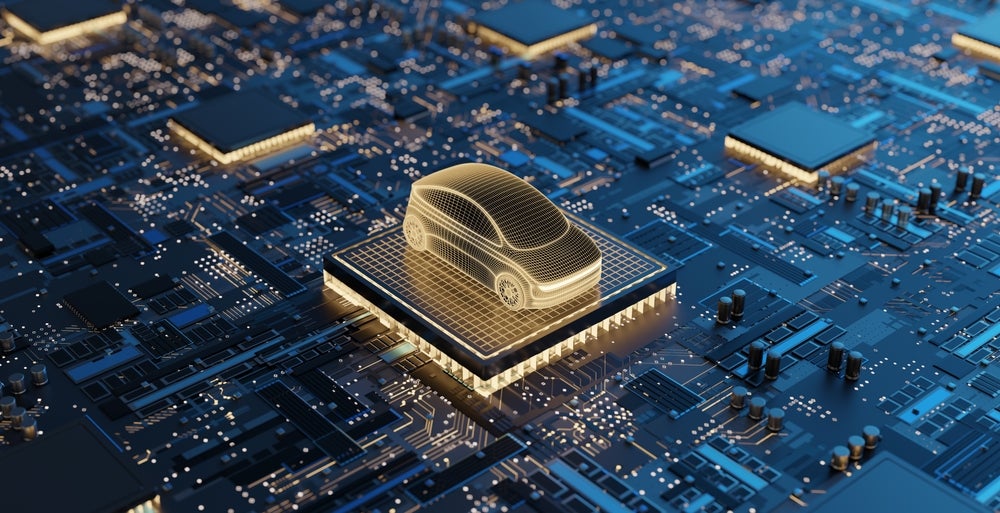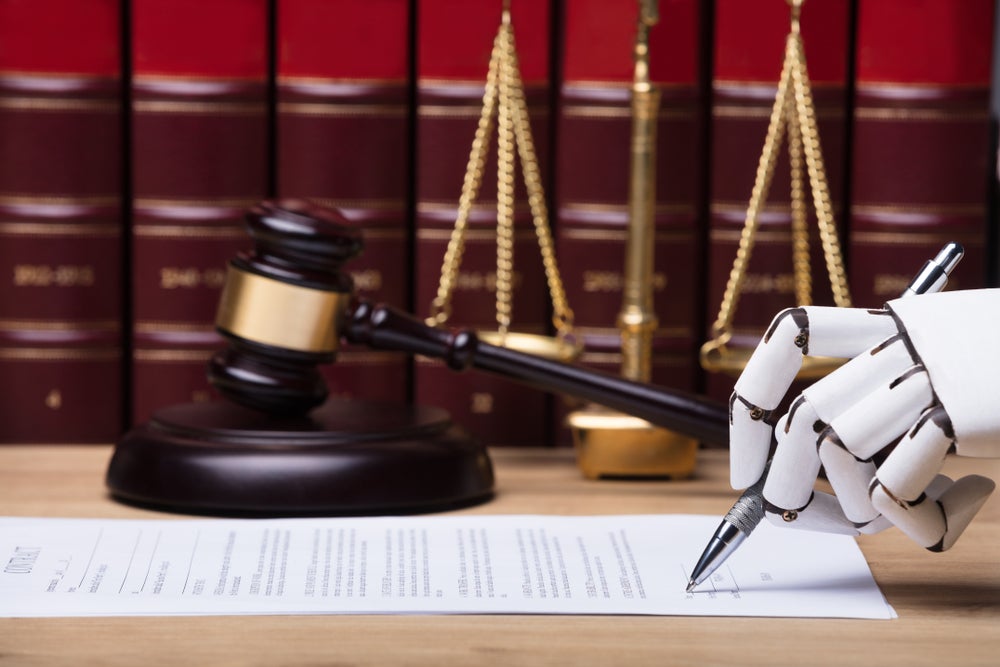Banner artwork by aniqpixel /Shutterstock.com
The integration of artificial intelligence (AI) stands as a herald of digital transformation, introducing a new era of operational efficiency and innovation. While brimming with potential, this technological renaissance also brings forth a web of legal complexities and liability issues that challenge traditional legal norms and frameworks. With its sophisticated algorithms and decision-making capabilities, AI has catapulted the business community into uncharted legal territories when dealing with the attribution of responsibility and accountability for AI’s outputs, actions, and even errors.
The legal puzzle of AI liability
The legal puzzle of AI liability presents a multidimensional challenge, redefining the contours of accountability in the digital age. As AI systems become increasingly autonomous, they raise complex questions about liability in scenarios where human oversight is minimal or even absent. Real-world AI failures have already highlighted the urgent need for legal clarity. For instance, the deployment of autonomous vehicles has led to accidents where liability is difficult to ascertain. Similarly, AI applications in healthcare and financial services have faced scrutiny for errors, misdiagnoses, and biases that could have significant legal ramifications.
Laws designed for a human-centric world struggle to accommodate entities that can lean, adapt, and make decisions independently.
How do we fit AI into traditional legal frameworks? Laws designed for a human-centric world struggle to accommodate entities that can learn, adapt, and make decisions independently. Issues of product liability, negligence, privacy, and even intellectual property rights take on new dimensions. Current legal paradigms often lack the specificity and flexibility needed to address the unique characteristics and consequences of AI systems. The evolution of AI technology demands a corresponding evolution in legal thinking.
Determining responsibility in AI operations
In the realm of AI, delineating responsibility for actions or mistakes can be a complex task. As AI systems increasingly perform tasks autonomously, the traditional boundaries of liability and accountability become blurred. This ambiguity is particularly evident in the autonomous vehicle, medical diagnostics, and financial services sectors, where AI systems make decisions that could have serious legal and ethical implications.
Take, for instance, autonomous vehicles. When an AI-driven car is involved in an accident, the question of liability becomes intricate. Multiple entities (such as the vehicle's manufacturer, the developer of the AI, and the owner/driver) play a role in the vehicle’s operation, but the legal assignment of responsibility is not always clear under current legal frameworks. Similarly, in the financial sector, AI systems used for trading or credit scoring can make biased decisions that impact customers significantly. Identifying who is at fault — the financial institution, the AI developer, or the impacted customer/trader — is challenging if an AI system unfairly denies a loan or makes a high-risk investment decision.

Artwork by cono0430 / Shutterstock.com
Traditional legal principles, such as negligence, product liability, and contractual obligations, were not specifically designed with AI in mind. Product liability laws may hold manufacturers responsible for defects in their products, but applying these laws to large language models (LLMs) or software, particularly AI algorithms that learn and evolve over time, is complex. Similarly, negligence laws require demonstrating both a duty of care and breach, which can be nebulous when AI’s decision-making processes are opaque and not fully understood by its users.
Legislative gaps
Moreover, the lack of specific legislation addressing AI’s unique characteristics further complicates the situation. While some jurisdictions have started to consider laws specifically targeting AI, such as the EU’s proposed AI Act, there is still a long way to go in creating comprehensive legal frameworks that can effectively govern AI’s diverse applications.
Even after liability is attributed to a specific entity, another important inquiry is which liability framework to apply.
Even after liability is attributed to a specific entity, another important inquiry is which liability framework to apply. A strict liability regime may be inappropriate for AI systems that are not intrinsically unsafe or dangerous. In addition, strict liability schemes tend to expose innovators to excessive legal risk regardless of the level of care exercised, which may stifle innovation in this burgeoning technological field. A fault-based regime is also inapt, because attributing fault and proving causation may be a complex endeavor for AI systems incorporated into a larger product or service offerings.
As AI continues to advance and permeate various business sectors, there is an increasing need for legal systems and businesses to evolve and adapt. This adaptation may involve creating new laws and reinterpreting existing ones to ensure that responsibility and liability in AI operations are clearly defined and enforceable. Businesses may also employ additional safeguards surrounding the responsible use of the AI system. For example, businesses may choose to scrutinize more closely the quality of the inputs to the AI system or more proactively filter its outputs to mitigate legal risk. This business and legal evolution is essential not only for legal clarity and fairness but also to foster trust and encourage responsible AI development and use.
The evolving role of in-house AI counsel
The introduction of AI in the corporate sphere has catalyzed a significant shift in the role of in-house counsel: navigating their organizations through the uncharted waters of AI-related legal complexities, including risk mitigation. This evolution demands that in-house counsel not only possess a strong legal acumen but also develop a keen understanding of AI technologies.
In-house counsel must immerse themselves in continuous learning, keeping abreast of the latest trends, regulatory changes, and potential legal pitfalls associated with AI. This might involve participating in specialized training, attending industry conferences, understanding the continuing and potentially changing development and application of AI, or engaging with professional networks focused on AI and law.
Best practices for in-house legal teams
- Develop an in-depth understanding of AI technology and its business applications to provide more informed legal advice. This includes an understanding of requisite contractual provisions, such as limitations of liability and robust indemnification provisions that strive to balance offering protection and managing risk.
- Understand the appropriate standard of care and liability framework applicable to your AI system.
- Establish a close collaboration and coordination with internal technical and development teams on new company innovations involving AI, as well as with external AI experts to stay updated on the latest AI advancements and their potential legal impacts.
- Create a culture of continuous learning within legal teams, encouraging ongoing education and adaptation to new legal challenges posed by AI.
- Regularly review and update legal strategies and guidelines to ensure they align with the fast-evolving landscape of AI technology and its associated regulatory environment.
By embracing these practices, in-house counsel can effectively guide their organizations through the complexities of AI integration, ensuring legal compliance while fostering innovation and growth.
Case studies: AI failures and legal consequences
Real-world failures provide pivotal lessons and insights into the complex interplay between technology, law, and ethics. These case studies are not just anecdotal; they are critical in shaping our understanding of liability and responsibility in the age of AI.
Autonomous vehicle accidents
Autonomous vehicles are a prime example of the issues that may arise in determining legal liability. When such vehicles, governed by AI systems, are involved in accidents, the question of liability becomes murky. Should the vehicle manufacturer, the AI system developer, the driver (if present), or the owner of the vehicle bear the responsibility? Or is some combination of actors responsible under a joint and several liability theory? The legal analysis involves a complex dissection of the layers of control, decision-making, oversight, and foreseeability of the AI system’s actions.
Healthcare AI misdiagnoses
AI in diagnostics has revolutionized patient care. However, instances of AI misdiagnoses raise serious concerns. When an AI tool leads to a wrong diagnosis, the repercussions are not just medical but also legal. Who is liable for the misdiagnosis? Is it the healthcare provider using the AI, the developers of the AI algorithm, or the institution that implemented the tool? The liability often hinges on the degree of reliance placed on the AI’s decision, the sufficiency of warnings to the healthcare provider of known risks associated with the AI system, and the level of human oversight involved. In addition, the learned intermediary doctrine may act as a viable defense to liability where the judgment and skill of the healthcare provider are paramount. Of course, any technology that is directed to the patient as consumer, and cuts out the provider from the process, then removes the learned intermediary defense from the analysis.
Data privacy and breaches
In data security, AI systems accessing and managing sensitive information pose significant risks. Determining responsibility is complex when these systems access personal data or are breached, leading to data leaks or potential privacy violations. The legal analysis involves examining the adequacy of notice and consent, if required, of the data collection or whether the breach was due to inherent vulnerabilities in the AI system, lapses in oversight by the managing company, or external factors beyond either’s control.
Navigating current and future legal frameworks
Current legal frameworks, primarily those based on traditional theories such as product liability, negligence, intellectual property (IP), and data privacy laws, offer a starting point but often fall short in fully addressing the nuances of AI. Legal doctrine is founded on decades of precedent and is often slow to adapt to rapidly evolving technology.

Product liability, for instance, traditionally covers defects in manufacturing or design. However, AI's self-learning capabilities and algorithmic evolution pose unique challenges: when AI evolves post-deployment, determining liability for its actions becomes more complex. Similarly, negligence theories are based on a duty of care and reasonable foreseeability, concepts that are difficult to apply to autonomous AI systems whose actions may be unpredictable or beyond the direct control of their creators.
AI also introduces new challenges to intellectual property law. Who owns the rights to content or inventions created by AI? And how are existing IP rights impacted when AI systems are “trained” on protected material or even inadvertently infringe upon them? These questions highlight the need for nuanced interpretations and potential reforms in IP law, particularly around fair use (typically applied in the copyright context) and experimental use (typically applied in the patent context).
Data privacy is another critical area of law impacted by AI, particularly with AI systems that process vast amounts of personal data. Compliance with laws like the GDPR and CCPA is paramount, but the opaque nature of some AI algorithms can make it challenging to ensure and demonstrate compliance.
The rapid advancement of AI technology means that legal frameworks must concurrently evolve to effectively address these issues. In-house legal teams play a pivotal role in this process. They must navigate current laws and anticipate future legal developments. This requires a proactive approach: staying informed about AI advancements, participating in legal and tech communities, and contributing to policy discussions and law reform efforts. By combining legal and business-centric solutions, companies employing AI technology can mitigate their legal exposure while still embracing this highly disruptive and promising technology.
Disclaimer: The information in any resource in this website should not be construed as legal advice or as a legal opinion on specific facts, and should not be considered representing the views of its authors, its sponsors, and/or ACC. These resources are not intended as a definitive statement on the subject addressed. Rather, they are intended to serve as a tool providing practical guidance and references for the busy in-house practitioner and other readers.






